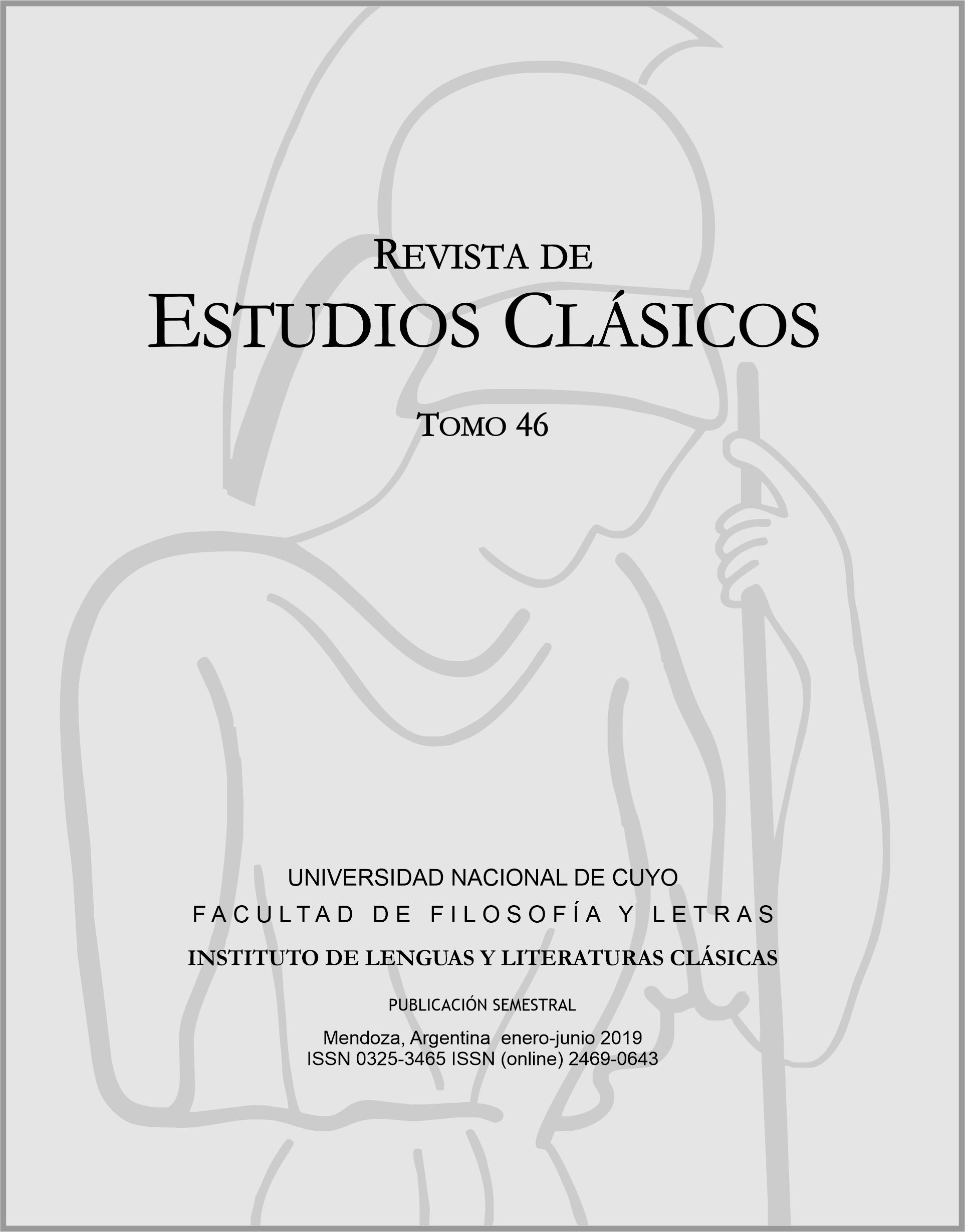La navigatio Sancti Brendani Abbatis: Eneas en el Medioevo
Keywords:
Aeneas, Saint Brendan, travel, driver, paradise, transworldAbstract
The study focuses on two fundamental issues of both stories: the dux status of the protagonist (Aeneas and Saint Brendan, respectively) and
the symbolic itinerary to the promised land. The analysis is situated in a plane in which the symbol matters more than the data from reality, even
when these data is essential for the full understanding of the journey. A deep coincidence is observed in the trajectory of both characters as a
symbol of a complex spiritual itinerary that starts from ignorance or imperfect knowledge, progresses attending a ritual journey and passes
successive tests that strengthen the pietas and the uirtus of the pilgrims. Through a virtual death, represented by the passage of the infernal
transworld, ordinary contingencies are overcome to perceive the authentic dimension of sub specie aeternitatis works.
References
Benedeit (1983). El viaje de San Brandán. Madrid: Siruela. Chevalier, J. / Gheerbrant, A. (1982). Dictionnaire des symboles. París: Éditions Robert Laffont.
Corbella, D. (1991). El viaje de San Brandán: una aventura de iniciación. Filología Románica 8, pp. 133-147.
Dauge, Y. A. (1984). Virgile. Maître de Sagesse. Milan: Archè.
De Goeje, M. J. (1891). La Légende de saint Brandan. Actes du Huitième Congrès International des Orientalistes tenu en 1889 à Stockholm et à Christiana, Leiden, Brill, pp. 43-76.
Esposito, M. (1938). Sur la Navagatio sancti Brendani et sur les versions italiennes de la Navagatio. Romania 64, pp. 328–346.
Esposito, M. (1960). An apocryphal Book of Enoch and Elias as a possible source of the Navigatio sancti Brendani, reed. en Wooding, J. (ed.) (2000). The Otherworld Voyage in Early Irish literature: an anthology of criticism, Dublin: Four Courts Press, pp. 27-41.
Esposito, M. (1961). L'édition de la Navigatio S. Brendani, Scriptorium 15, pp. 286-292.
Kenney, J. F. (1920). The legend of St. Brendan, Royal Society of Canada. Proceedings and Transactions 14, pp. 51-67.
Lemarchand, M. J. (1983). Prólogo. En: Beneit. El viaje de San Brandán. Madrid: Siruela.
Mackley, J. S. (2008). The Legend of St Brendan: A Comparative Study of the Latin and Anglo-Norman Versions. Leiden: Brill.
Martínez, M. (1998). El mito de la isla perdida y su tradición en la historia, cartografía, literatura y arte. Revista de Filología de la Universidad de La Laguna 16, pp. 143-184.
Mynors, R. A. B. (ed.) (1969). Vergili Maronis. Opera. Oxford: OUP.
Ozanam, F. A. (1845). Dante et la philosophie Catholique au trezième siècle. Paris: Jacques Lecoffre et Cie.
Paschoud, F. (1967). Roma aeterna. Roma: Institut Suisse de Rome.
Patch, H. R. (1956). El otro mundo en la literatura medieval. México-Buenos Aires: FCE.
Plummer, C. (1905). Some New Light on the Brendan Legend. Zeitschrift für Celtische Philologie 5, pp. 124–141.
Rowland, R. Jr. (1971). Aeneas as a heroe in Twelfh-Century Ireland. Vergilius 16, pp. 2932.
Selmer, C. (1949). The origin of Brandenburg (Prussia): the saint Brendan legend and the Scoti of the tenth century. Traditio 7, pp. 416-433.
Selmer, C. (ed.) (1959). Navigatio Sancti Brendani Abbatis from early Latin manuscripts. New York: University of Notre Dame Press.
Zimmer, H. (1889). Keltische Beitrage. Brendans Meerfahrt. Zeitschrift für Deutsches Alterthum 33, pp. 129–220, 257–338.
Downloads
How to Cite
Issue
Section
License
Aquellos autores/as que tengan publicaciones con esta revista, aceptan los términos siguientes:
- Los autores/as conservarán sus derechos de autor y garantizarán a la revista el derecho de primera publicación de su obra, el cuál estará simultáneamente sujeto a laLicencia Creative Commons Atribución-NoComercial-CompartirIgual 2.5 Argentina (CC BY-NC-SA 2.5 AR). (https://creativecommons.org/licenses/by-nc-sa/2.5/ar/)que permite a terceros compartir la obra siempre que se indique su autor y su primera publicación esta revista.
- Los autores/as podrán adoptar otros acuerdos de licencia no exclusiva de distribución de la versión de la obra publicada (p. ej.: depositarla en un archivo telemático institucional o publicarla en un volumen monográfico) siempre que se indique la publicación inicial en esta revista.
- Se permite y recomienda a los autores/as difundir su obra a través de Internet (p. ej.: en archivos telemáticos institucionales o en su página web) antes y durante el proceso de envío, lo cual puede producir intercambios interesantes y aumentar las citas de la obra publicada. (Véase El efecto del acceso abierto).












